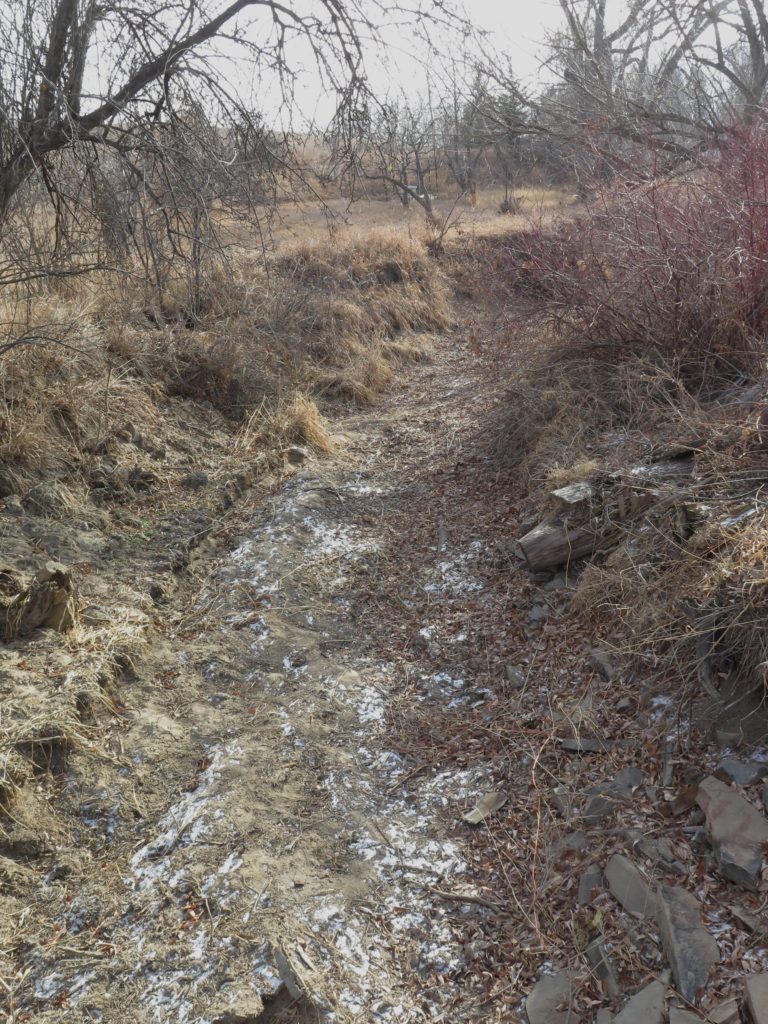Subscribe at the right for a monthly post with writing explorations for creating your own ecobiography.

Alaska is a vast land of deep forests and wild oceans that provide habitat for some of the world’s most charismatic creatures and livelihood for humans rugged enough to weather its harsh climatic and economic conditions. On a nine-day cruise of the Alaskan Inside Passage with family to celebrate my parents’ 60th wedding anniversary, I was continually struck by the disjunction between the fierce beauty of the natural environment and the manufactured consumerism of the gigantic ship on which we traveled. Like all tourism to areas of ecological preservation, Alaskan cruises are paradoxical in that the boat is invasive and even destructive of the very thing upon which it depends: Alaska’s wildness.
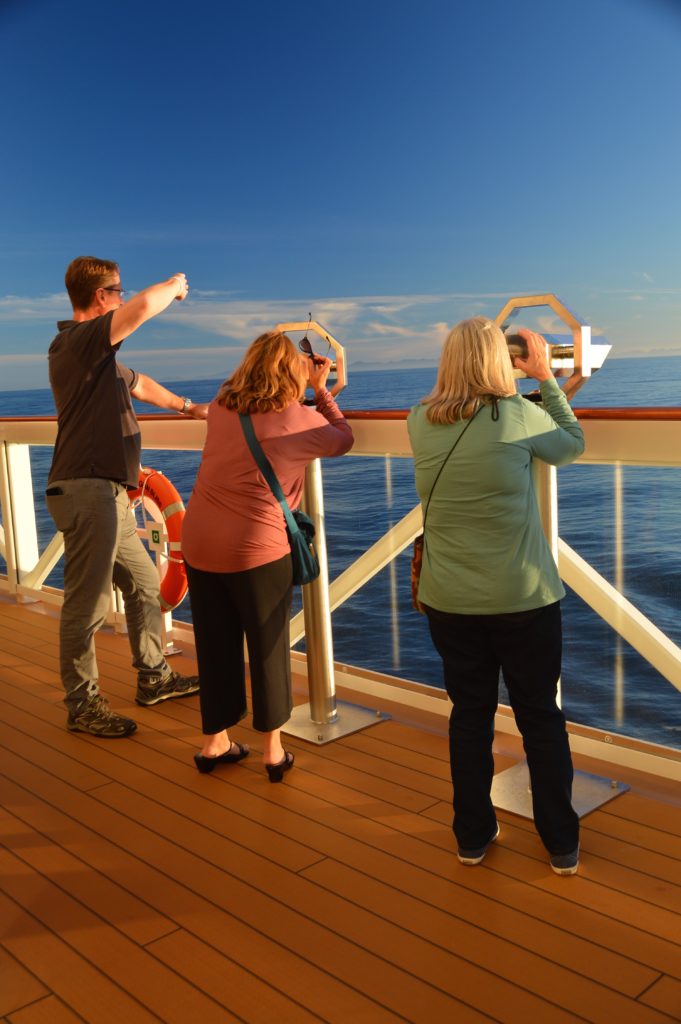
I call this picture “What are these people looking at?” As family members are looking, in fact, at the sea and sky at the southern end of the Inside Passage, I caught the gorgeous golden glow of the setting sun reflected against the ship. While they peered through the viewers, I noticed the light’s intensity and quickly snapped the shot. I haven’t done anything to the camera or photo to get these colors. Even though it all looks artificial, the air, light, and water form the natural environment engulfing the ship, an eerie juxtaposition.
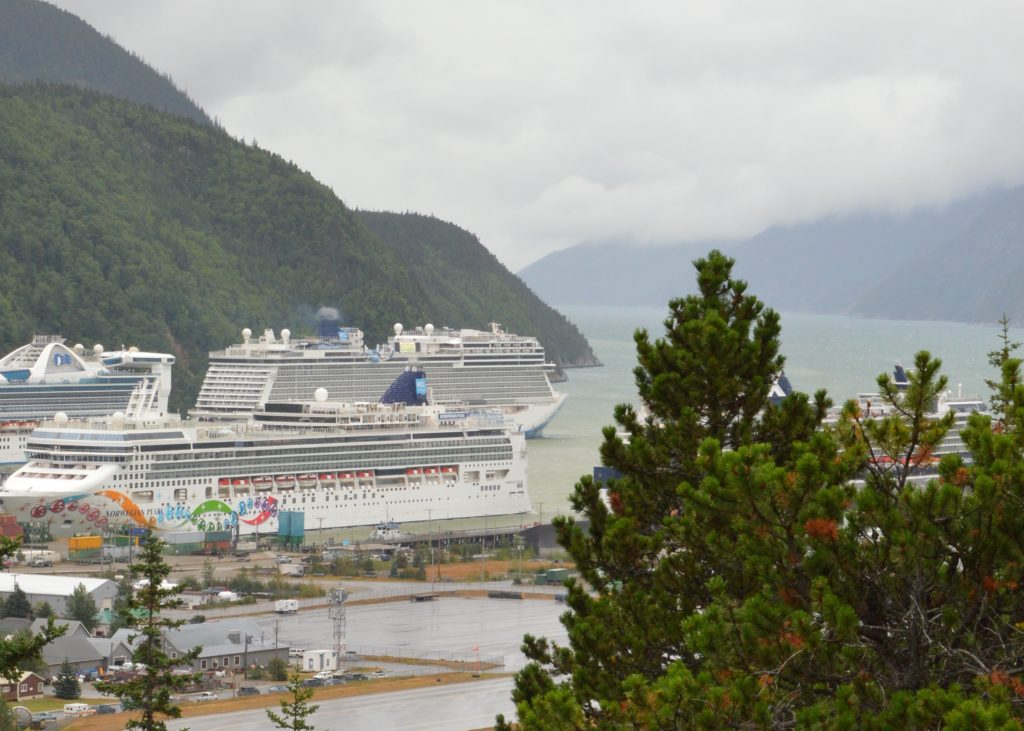
My own participation in the tourism paradox made me uncomfortable, but I went on the cruise to be with my parents, who at 80 needed the comfort of the boat to travel to a state they had long wanted to visit. I loved being on the water but not on the ship; stops at the ports of Ketchikan and Skagway for hikes and tours outside the established tourist consumer areas were highlights for me, although these encounters were still tourist “excursions,” as they’re marketed, and therefore still part of a manufactured experience.
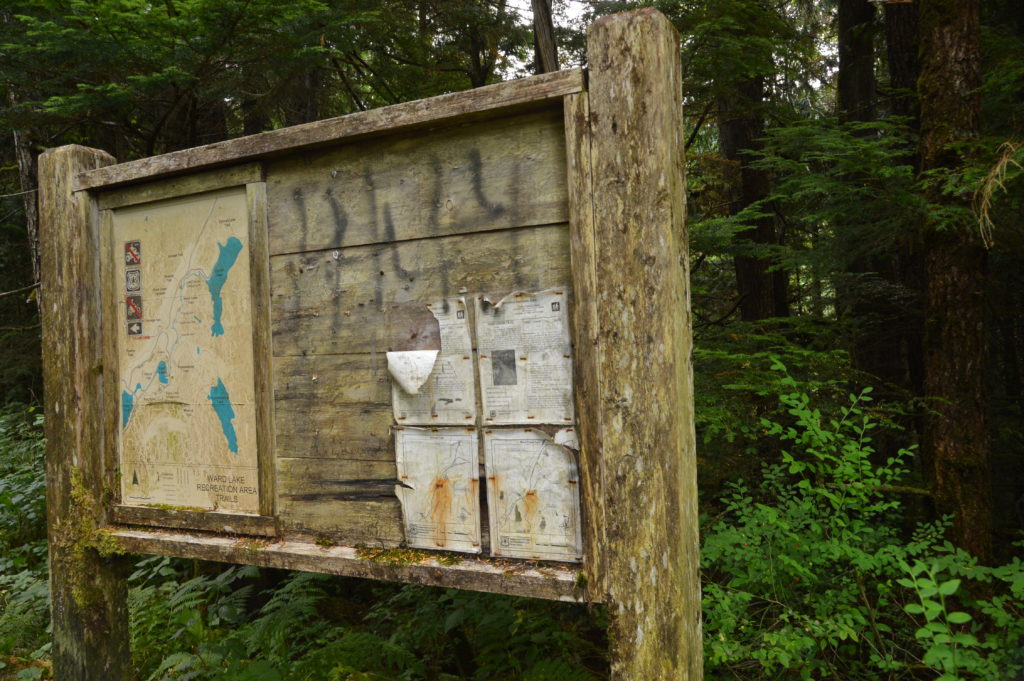
As I write about my time in Alaska, I’m trying to differentiate between my discomfort with the ecologically unsustainable aspects of the trip (not only the waste from the ship, but the ship’s very presence in Alaskan waters) and my gratitude for the opportunity to witness a small part of the state’s ecological wonders, maintained and supported by the indigenous knowledge and customs of its Native peoples that provide yet another—and more ecologically beneficial–juxtaposition of human and nature. This seems a big undertaking—but it’s a big state.
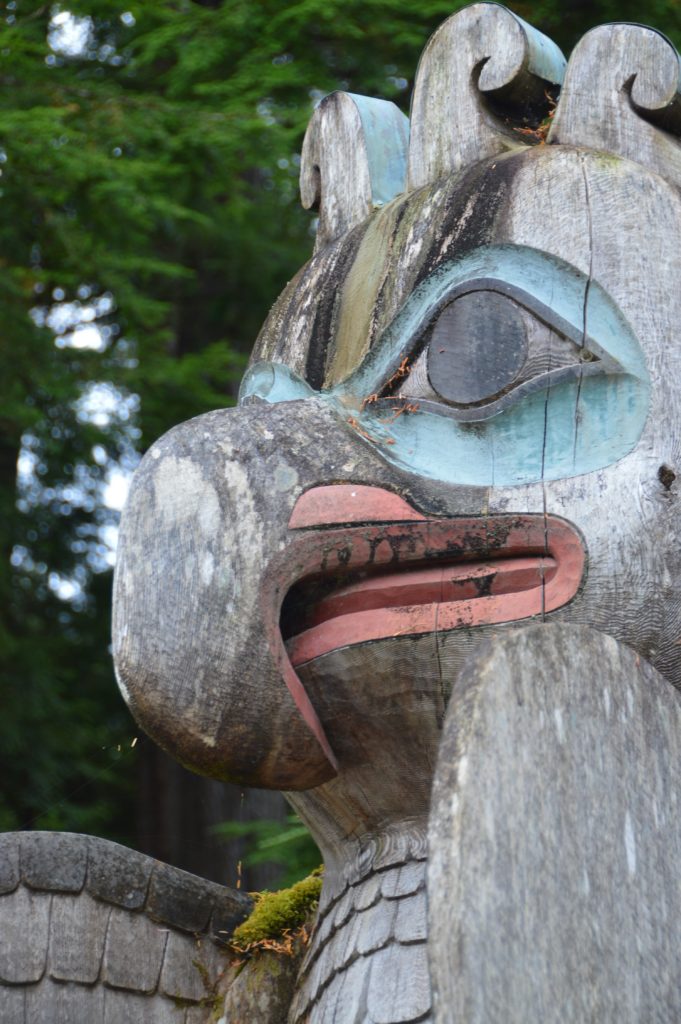
Writing Exploration: Write about your own observations of disjunction between the natural and human-built environments. How were these environments different or in conflict? And how did you experience your own participation in these paradoxes? What insights do you draw about your position with/in such ecological frameworks?
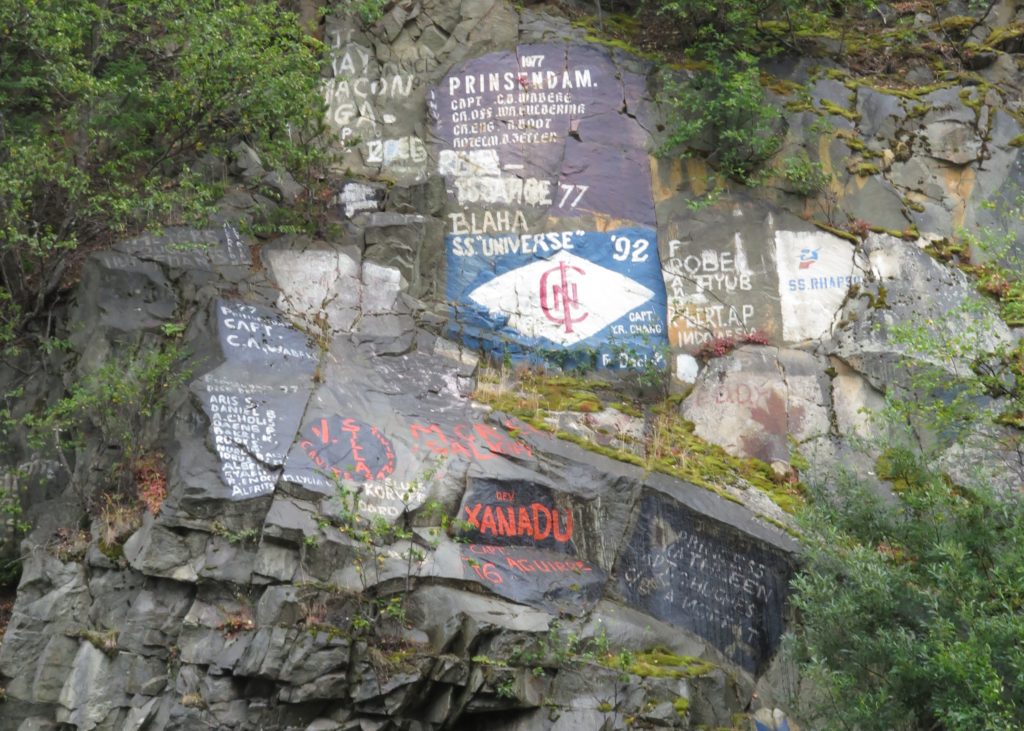
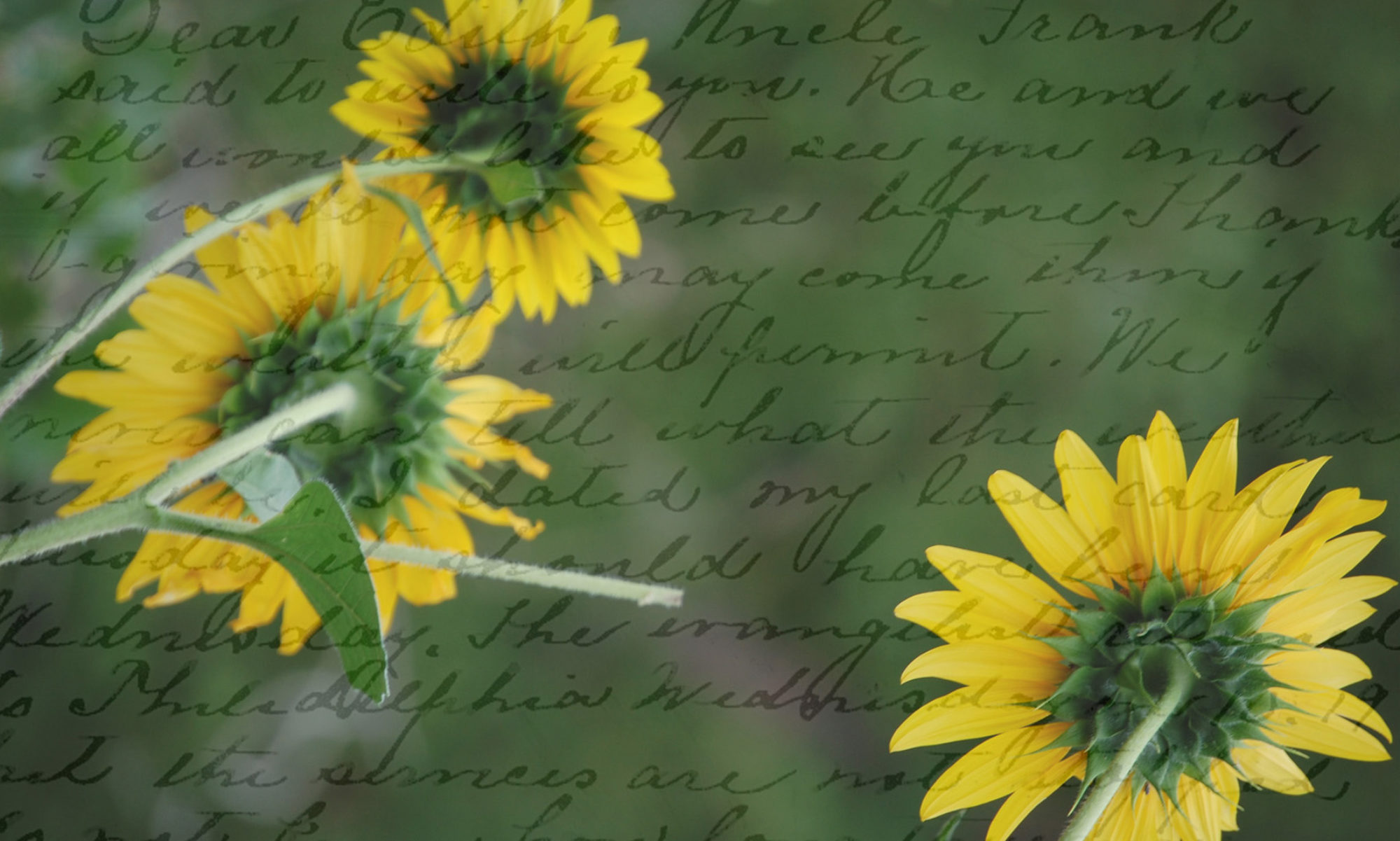
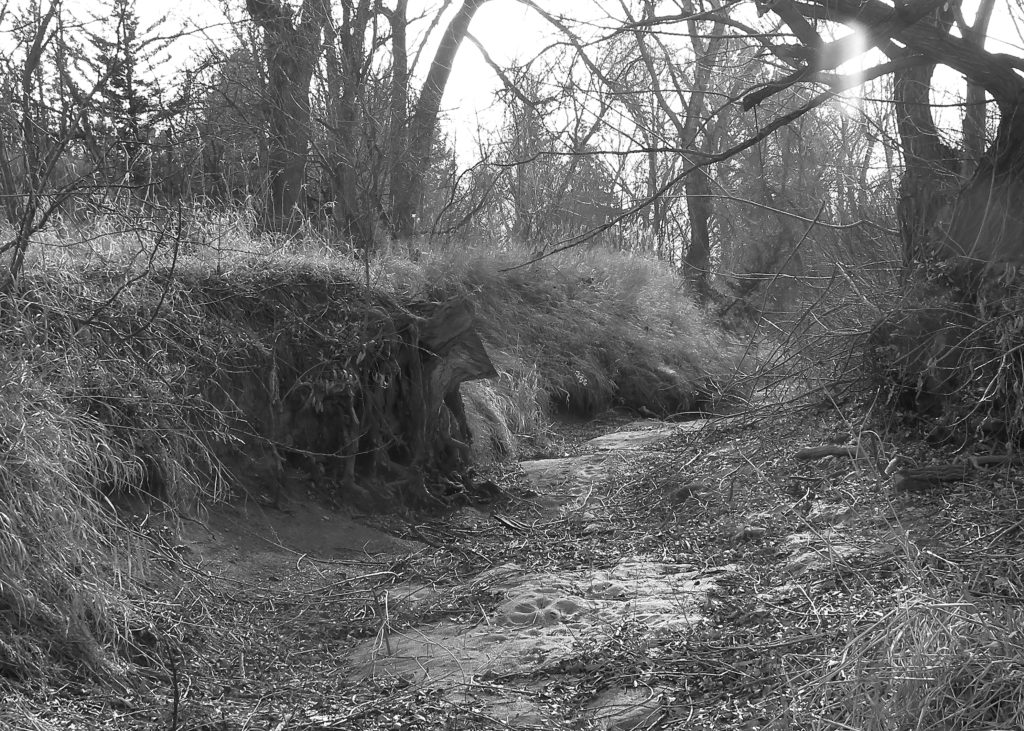
 The night before our ditch adventure, we read Signs Along the River by Kayo Robertson, a children’s book about using the five senses to find the evidence creatures leave behind like tracks, trails, bones, and, to put it plainly, poop. With these clues in mind, we set out the next morning from the bridge over the Rough & Ready to see what we can find. That bridge is next to our swimming hole, a place we often see muskrats paddling when the water’s flowing. Not far from the bridge we find the mouth of a burrow and imagine cozy muskrats in hibernation up inside the ditch bank behind the hole.
The night before our ditch adventure, we read Signs Along the River by Kayo Robertson, a children’s book about using the five senses to find the evidence creatures leave behind like tracks, trails, bones, and, to put it plainly, poop. With these clues in mind, we set out the next morning from the bridge over the Rough & Ready to see what we can find. That bridge is next to our swimming hole, a place we often see muskrats paddling when the water’s flowing. Not far from the bridge we find the mouth of a burrow and imagine cozy muskrats in hibernation up inside the ditch bank behind the hole. The topography of an empty ditch is a meeting of curves and lines as the flowing water follows the natural limestone walls created over thousands of years, exposing textures of grass, sand, and roots along the ditch’s perimeter. A tree too close to the edge that was felled before our time left a tapestry of tangled roots that now fortifies the bank from erosion.
The topography of an empty ditch is a meeting of curves and lines as the flowing water follows the natural limestone walls created over thousands of years, exposing textures of grass, sand, and roots along the ditch’s perimeter. A tree too close to the edge that was felled before our time left a tapestry of tangled roots that now fortifies the bank from erosion. Near another bridge, my grandson spots tracks in the dry sand along the ditch bottom, with many tracks in one spot as if an animal were circling. “What do you think it was?” I ask him. “Coyotes,” he guesses, and he is right because next to the tracks we are delighted to find coyote poop. Coyotes are a constant at the farm; it’s no surprise they run the empty ditches as winter highways.
Near another bridge, my grandson spots tracks in the dry sand along the ditch bottom, with many tracks in one spot as if an animal were circling. “What do you think it was?” I ask him. “Coyotes,” he guesses, and he is right because next to the tracks we are delighted to find coyote poop. Coyotes are a constant at the farm; it’s no surprise they run the empty ditches as winter highways.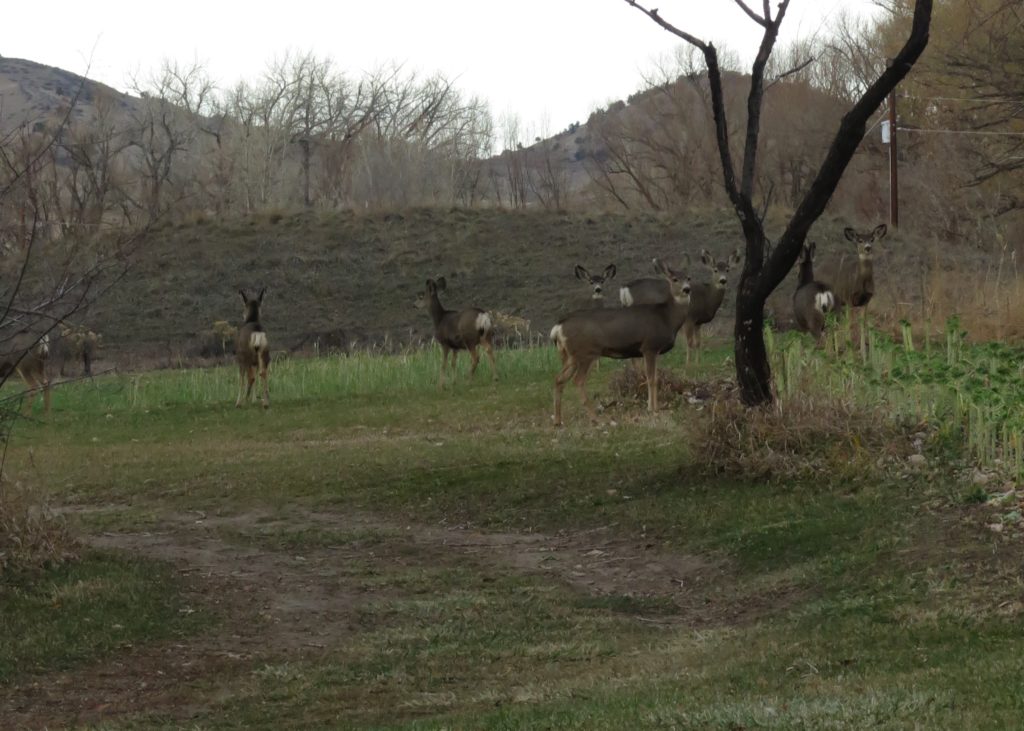 My grandson and I walked the Rough and Ready from one end to the other and back again, stopping to explore whatever caught our eye, including an aluminum baseball bat half-buried in silt and grass, a relic of the flood, perhaps, like the eight-ball we exhumed from a different ditch last spring. In the 20-some years I’ve lived at Stonebridge, I’ve never walked the ditch from end to end before. Seeing it from the inside out was like opening a door to a new room in my house that I hadn’t known existed and realizing that life went on there, with or without me. Now I know that the winter ditch is something I’ve been missing.
My grandson and I walked the Rough and Ready from one end to the other and back again, stopping to explore whatever caught our eye, including an aluminum baseball bat half-buried in silt and grass, a relic of the flood, perhaps, like the eight-ball we exhumed from a different ditch last spring. In the 20-some years I’ve lived at Stonebridge, I’ve never walked the ditch from end to end before. Seeing it from the inside out was like opening a door to a new room in my house that I hadn’t known existed and realizing that life went on there, with or without me. Now I know that the winter ditch is something I’ve been missing.